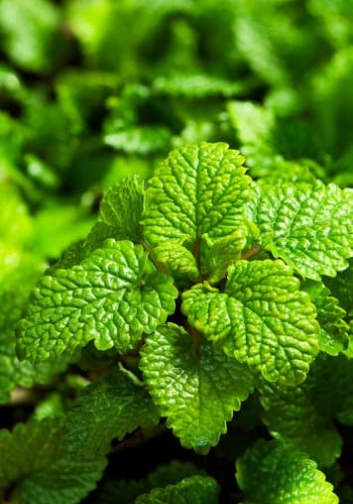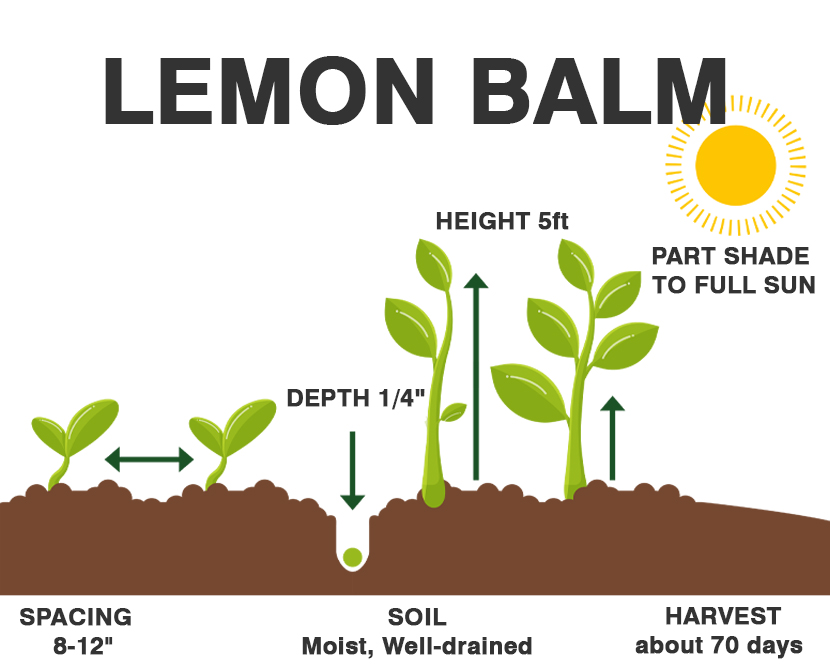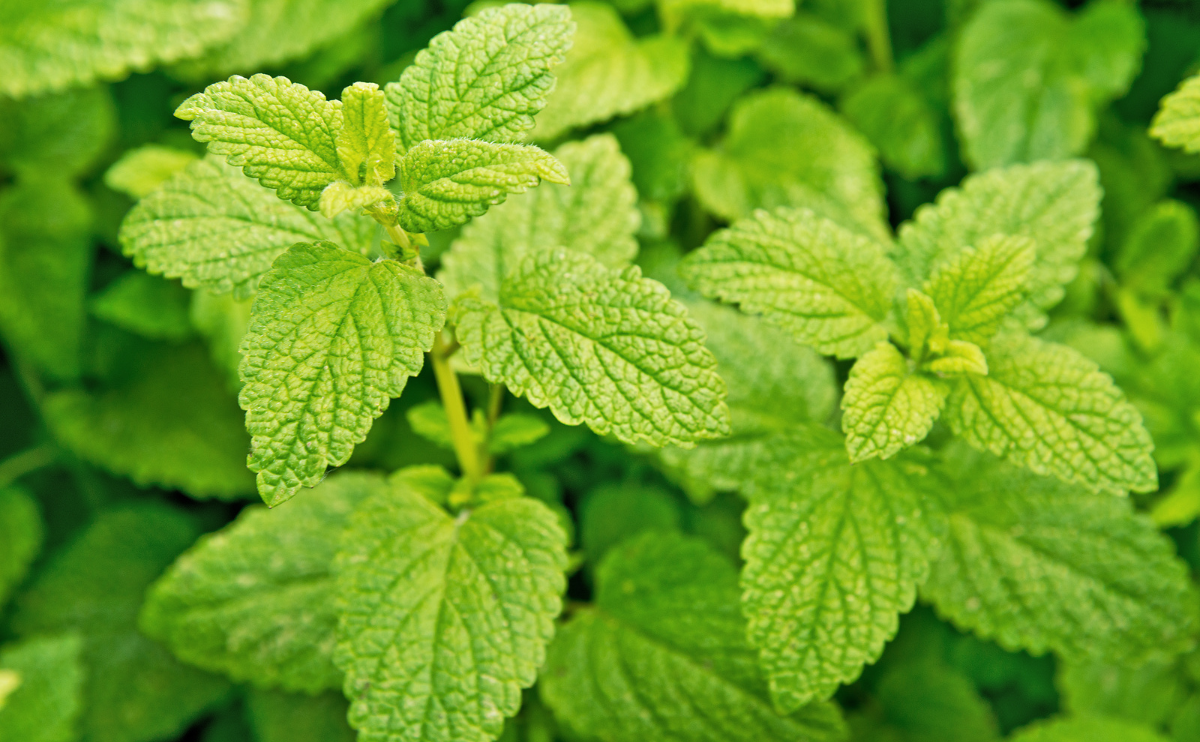Lemon balm is an ancient herb native to southern Europe that is closely related to mint. It features similar wrinkled, oval-shaped leaves and boasts a fresh citrusy smell and scent that many home cooks love to add to salads, soups, and more. Lemon balm also has a unique medicinal history—its use as a curative can be traced back to ancient Greece and Rome, where its leaves were used in a variety of tonics and teas, and its essential oils were extracted to aid with digestive issues.
The versatile herb is a rapid grower outdoors—after planting in early spring, it’s not unusual to see a lemon balm plant grow to over a foot tall (sometimes, even two!) in just a single season. For that reason, many gardeners choose to plant lemon balm in containers, whether grown indoors or out, in an attempt to control its invasive nature. Like many other herbs, lemon balm prospers best outdoors but can be grown successfully inside as well, as long as proper attention is paid to its unique needs.

| Botanical name | Melissa officinalis |
| Common name | Lemon balm |
| Plant type | Herbaceous perennial |
| Mature size | 1.5–2 ft. tall, 1.5–3 ft. wide |
| Sun exposure | Full sun, partial shade |
| Soil type | Well-drained |
| Soil pH | Neutral to acidic |
| Bloom time | Summer |
| Flower color | White, pale yellow |
| Hardiness zones | 3–7 (USDA) |
| Native area | Europe |

When to Plant?
This will be determined by your planting zone. There is a final frost date for each area. As a result, you can plan your gardening activities around this date. Check our Frost Dates Across North America: First & Last Frost Dates Chart. However, the date will not be the same for every plant.
How to Plant
While lemon balm plants thrive in full sun, they can’t tolerate extreme heat, so if you live in a warmer climate, consider a spot with partial shade to prevent scorching. The soil should be on the sandy side—a well-draining, loamy variety, with a soil pH between 4.5 to 7.6
.After the last threat of frost has passed and the soil has become a bit more workable, mix a good few inches of organic matter like compost into the potting soil (if planting in a container) or planting site.
Plant lemon balm plants in a hole about the same depth as their starter pots, with a few extra inches of space on either side. (If transplanting plants started inside, harden off young plants for a week by placing them outside in a sunny spot for a few hours during the day and bringing them back inside during the harsher nights to slowly condition them before planting in the ground.)

Plant lemon balm plants in a hole about the same depth as their starter pots, with a few extra inches of space on either side. (If transplanting plants started inside, harden off young plants for a week by placing them outside in a sunny spot for a few hours during the day and bringing them back inside during the harsher nights to slowly condition them before planting in the ground.)
Lemon balm (Melissa officinalis), a perennial herb and member of the mint family (Lamiaceae), is a fragrant, essential addition to any herb garden. The flavorful herb adds a punch of flavor to herbal teas, baked goods, salad dressings, and even ice cream.
How to Cultivate
Soil – It prefers moist, well-drained soil but can grow in clay.
Sun – Part shade to full sun
Spacing – 8 – 12″
Water – Moist to dry (it’s adaptable)
Let the soil dry out completely before watering.
Fertilizer – This plant has no special fertilizing needs
How to Harvest
The best time to harvest lemon balm is right before the plant blossoms—this is when the oil that creates its signature flavor is at its most potent. You can harvest small amounts of lemon balm for use throughout its growing season by snapping off a few leaves at a time. For a bigger harvest, use shears to snip leaves from the center stem, in between side shoots, to continue encouraging bushy, full growth. Use lemon balm right away or store fresh leaves in an airtight plastic bag or container in the refrigerator.
Hydroponics
Germination: Lemon balm seeds can be germinated in a seedling tray filled with hydroponic growing media, such as rockwool cubes or coco coir. The seeds should be planted about 1/4 inch deep and kept moist until they sprout, which typically takes 1-2 weeks.
pH range: Lemon balm prefers a slightly acidic to neutral pH range of 6.0-7.0. Use a pH meter or test strips to monitor the pH of your nutrient solution and adjust as necessary using pH up or pH down solutions.
EC: The electrical conductivity (EC) level should be maintained at around 1.0-1.8 mS/cm for hydroponic Lemon balm. This helps to ensure that the plants receive the right amount of nutrients.
PPM: Lemon balm can also be measured in parts per million (PPM), which is a measure of the concentration of dissolved minerals in the nutrient solution. A PPM range of 800-1600 is suitable for lemon balm.
Humidity: The humidity level should be maintained at around 50-70% for Lemon balm to grow properly. This can be achieved by using a humidifier or by placing a tray of water near the plants.
Light hours: Lemon balm requires at least 6-8 hours of light per day to grow properly. Ideally, provide 12-16 hours of light per day using a grow light with a spectrum suitable for vegetative growth.
Air temperature: The air temperature should be maintained at around 20-25°C (68-77°F) during the day and around 15-18°C (59-64°F) at night for Lemon balm to grow well.
Water temperature: The water temperature in your hydroponic system should be maintained between 60-70°F (15-21°C). Use a water heater or chiller to adjust the water temperature as needed.
Overall, growing Lemon balm hydroponically can be a rewarding experience, and following these guidelines can help you grow healthy and vibrant plants.



